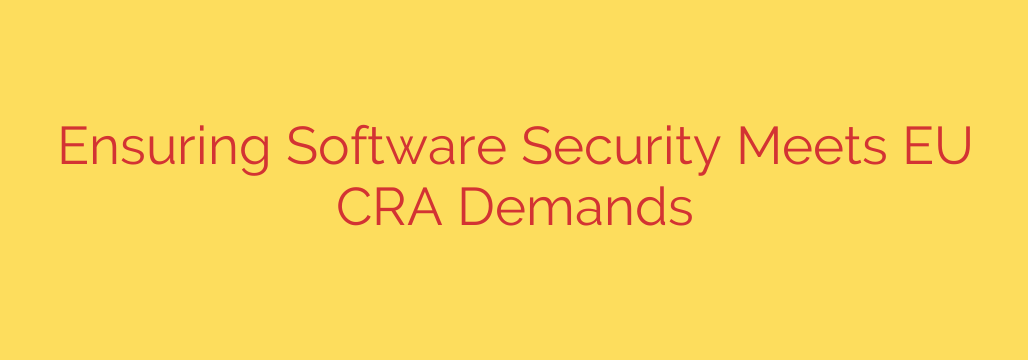
The landscape of digital product security is undergoing a significant transformation within the European Union. A major new regulation is setting stringent requirements for manufacturers, importers, and distributors placing hardware and software products onto the EU market. The central aim is to drastically improve the cybersecurity of these products, protecting consumers and businesses alike by raising the baseline of security across the board.
At its heart, this new framework mandates that products must be secure by design and by default. This isn’t an afterthought; security must be an intrinsic part of the development process from the very beginning. Manufacturers are now responsible for conducting thorough security risk assessments for their products and implementing appropriate measures throughout the entire product lifecycle. This requires a fundamental shift towards integrating security practices deeply into the software development pipeline, often referred to as DevSecOps.
A critical component of the regulation focuses on vulnerability handling. Companies must establish transparent and efficient processes for receiving, documenting, and addressing vulnerabilities. This includes implementing clear procedures for communicating vulnerabilities to users and, crucially, providing security updates to fix identified issues promptly. The era of infrequent or nonexistent security patching is effectively over for products sold in the EU. Furthermore, the regulation introduces obligations for reporting significant security incidents to relevant authorities, enhancing collective cybersecurity situational awareness.
Compliance necessitates a comprehensive review and likely overhaul of internal processes. Businesses must ensure their technical documentation is robust and demonstrates conformity with the requirements. Understanding product classification, whether a product falls under standard or critical categories, is also key as it impacts the required conformity assessment procedures. Moreover, the security of the supply chain supplying components and software libraries is increasingly under scrutiny, requiring companies to ensure security extends beyond their own development efforts.
Navigating these new demands requires proactive engagement and investment in security resources and processes. The importance of acting early cannot be overstated. Businesses need to understand the specifics of the regulation as it applies to their products, assess their current security posture against the new requirements, and develop a clear roadmap for achieving and maintaining compliance. This regulation is set to redefine market expectations for digital product security, making robust cybersecurity a mandatory foundation rather than a differentiator.
Source: https://www.tripwire.com/state-of-security/aligning-software-security-practices-eu-cra-requirements








